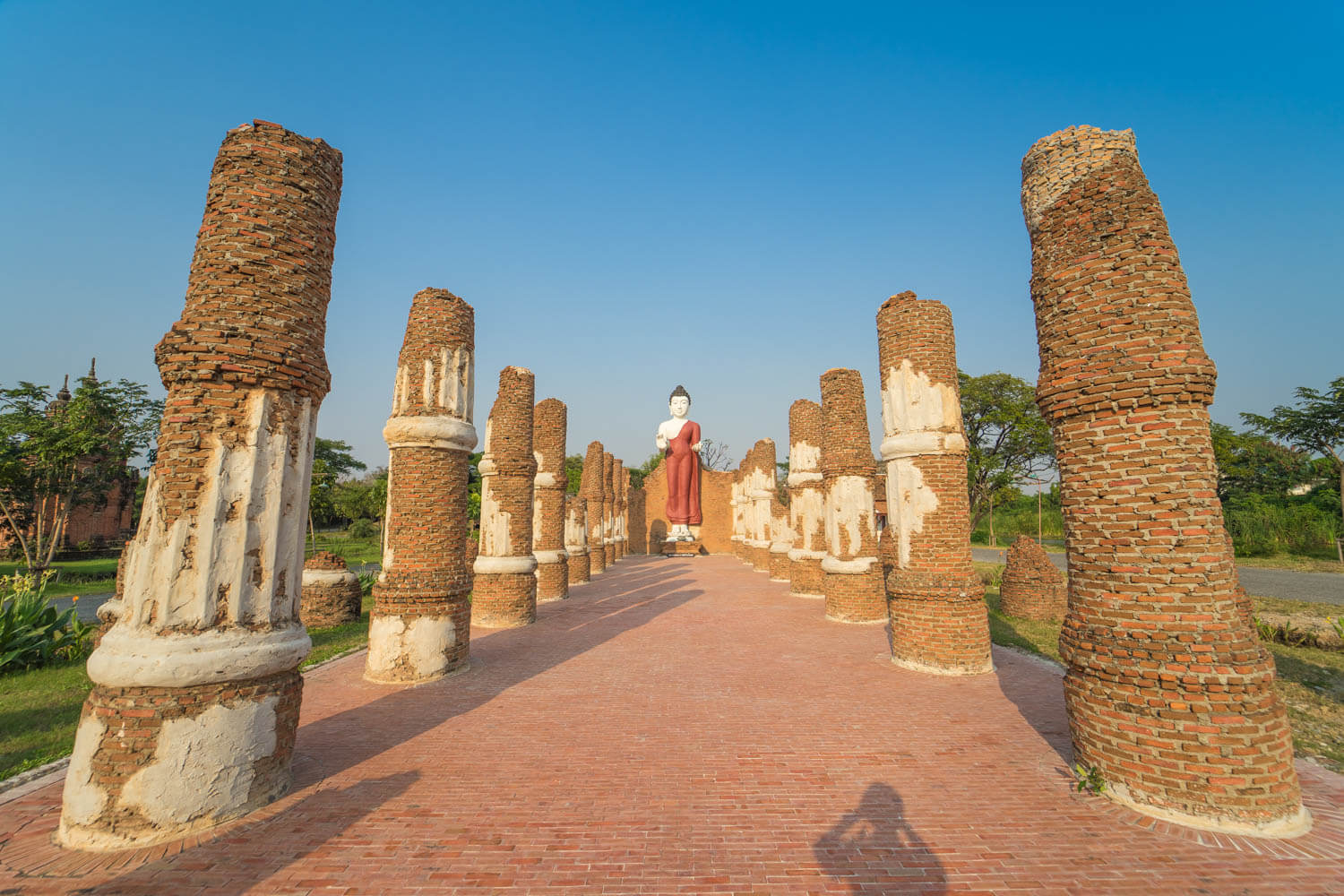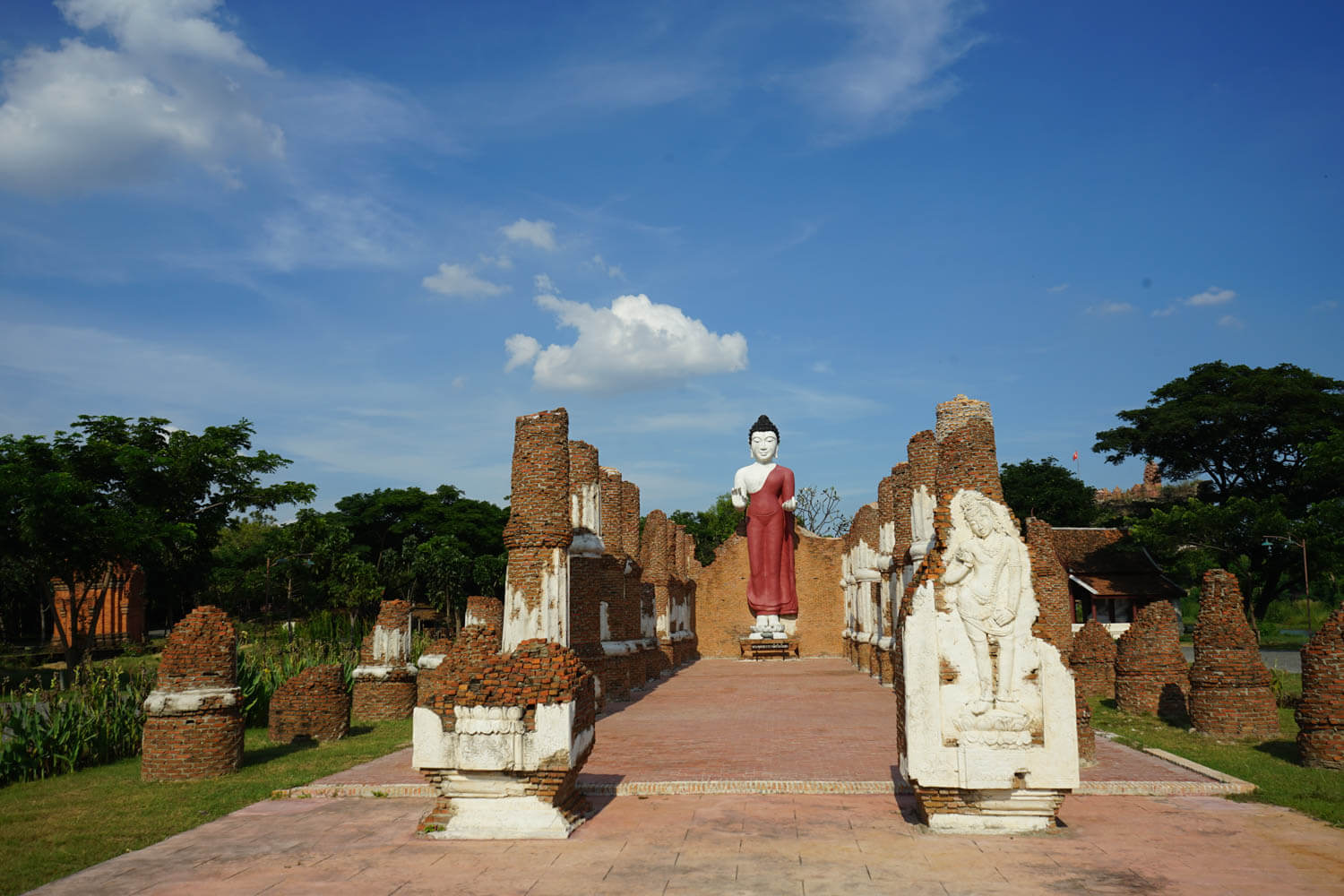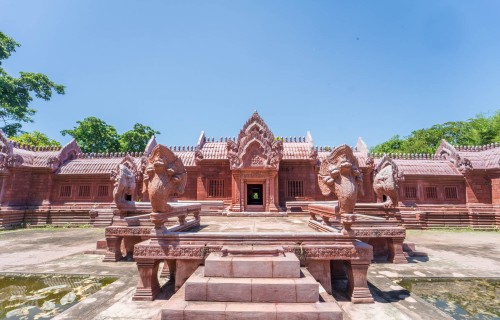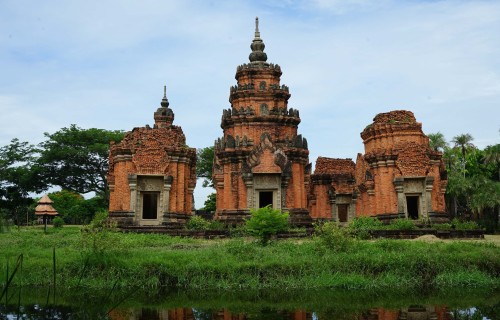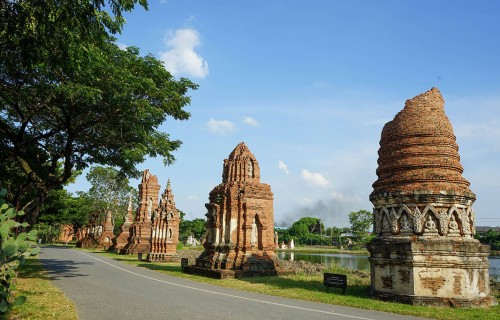Dvaravati Wihan (91)
- Information
The Dvaravati Kingdom has long been considered the center of Hinayana Buddhism. Since a large amount of the religious art works had been created in Dvaravati, they have been classified as artifacts of the Dvaravati school, the art school named after the period these works of art belong, The elaborate pieces of Dvaravati artworks were created in accordance with Buddhism beliefs.
Ubosot (ordination hall), wihan (assembly hall), chedi (stupa) and Buddha images executed during the period are normally large. The influence of Dvaravati art spread from Nakhon Pathom, the capital of the Dvaravati Kingdom, to its neighbouring regions in the center the south, the north and the northeast.
Muang Boran has reconstructed the Dvaravati wihan to represent the image of the Dvaravati Kingdom. whose influence had flourished in the northeastern region for more than a thousand years.
Ubosot (ordination hall), wihan (assembly hall), chedi (stupa) and Buddha images executed during the period are normally large. The influence of Dvaravati art spread from Nakhon Pathom, the capital of the Dvaravati Kingdom, to its neighbouring regions in the center the south, the north and the northeast.
Muang Boran has reconstructed the Dvaravati wihan to represent the image of the Dvaravati Kingdom. whose influence had flourished in the northeastern region for more than a thousand years.
